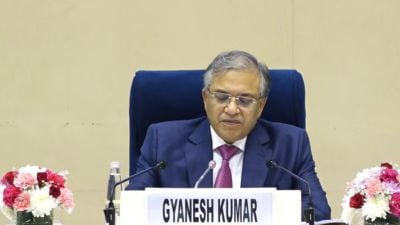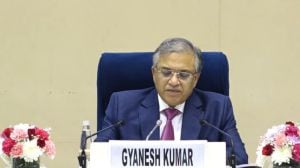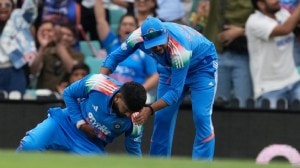Pottery Barn
A CERAMICS show typically brings to mind the image of an open air crafts mela where an array of pots and pans of safe designs and predictabl...

A CERAMICS show typically brings to mind the image of an open air crafts mela where an array of pots and pans of safe designs and predictable colours—few good, but largely dud works—lie together in a haphazard manner for quick bargain picks.
So it was refreshing to see a small gallery—New Delhi’s Gallerie Nvya—take on the task of giving ceramics a formal curatorial platform, especially at a time when a torrent of exhibitions in the city are focused on paintings. All the five Delhi-based artists—Pandurangiah Daroz, Vineet Kacker, Kristine Michael, Manisha Bhattacharya and Ela Mukherjee—have held solo shows in the past, but this is the first time they have come together for an exhibition titled Terra Natura.
Unlike in the West, where pottery is widely accepted as an independent art form and has a long tradition of clay-handling techniques, studio pottery came to India 80 years ago. In the 1920s, Gurcharan Singh, regarded as the pioneer of modern pottery, revived the use of Persian copper-blue tiles and brought home the concept of modern pottery under the influence of two international potters, Bernard Leach and Soji Hamada.
Singh set up Delhi Blue Art Pottery to impart training in pottery-making. He also had a thriving commercial thing going for his blue tiles that were used as architectural cladding.
Even as senior artists like Deviprasad, who trained under Nandalal Bose in the late ’30s, and later others like Nirmala Patwardhan pursued pottery, they were largely confined to functional tableware. It was not until a large studio was set up by ceramic artist Ray Meeker in Pondicherry that ceramic pottery took a definite direction in the ’70s. Meeker set up Golden Bridge Pottery and laid down some basic standards for handmade work in clay.
Most of the artists in the current show have been directly or indirectly influenced by Golden Bridge. But that’s where the similarity ends. The current crop has broken the mould and gone beyond functional ware, relying on individual experiences for inspiration.
The composure of Vineet Kacker’s works, on the other hand, draws inspiration from Himalayan architecture and paintings. In his recent work, Kacker combined street shrine motifs with kitsch push-cart products like dolls and keys, to create an iconographic language.
Since ceramics is an uncommon craft, artists have always faced difficulty in sourcing standardised materials like china clay. Most Indian ceramic artists learnt their technical skills the hard way—from reading books, to making their own clay mixture, to attending pottery workshops. Says Bhattacharya, ‘‘I’ve spent half my career perfecting the technique.’’ Her unfired sculptures explore the shapes of primitive pottery but have a magical contemporary feel; her opaque black-and-white pottery is paired with colourful plastic lids, which also serve as an interactive scale to measure ‘‘the depth of the jars’’.
Michael, on the other hand, exemplifies the problems faced by urban studio potters. After the closure of the Vriddchalam coal mines (near Pondicherry) in the ’80s, her main supply of china clay dried up. Today, she says, she has finally ‘‘relaxed into her technique’’. Her work mainly draws from nature—her collage of 32 porcelain plates are interspersed with verses of Pablo Neruda’s poems and pictures of clay shells she made and transferred on the plate using ceramic ink. Fittingly, Uma Nair, the show’s curator, says, ‘‘My idea was to give them the freedom to create their own space.’’
But even though prices of ceramic art are not exactly whizzing, interest in the medium is growing. The retail boom is also keeping them busy, as they supply to designer stores. And at between Rs 2,000 and Rs 65,000, it is a steal to purchase a superb piece of ceramic sculpture by artists who have established their individual language by experimenting with glazes and techniques.
But, reassuringly, in the end, they share a common trait: They all love the material and are finally stretching it to give shape to their imagination.



- 01
- 02
- 03
- 04
- 05




























